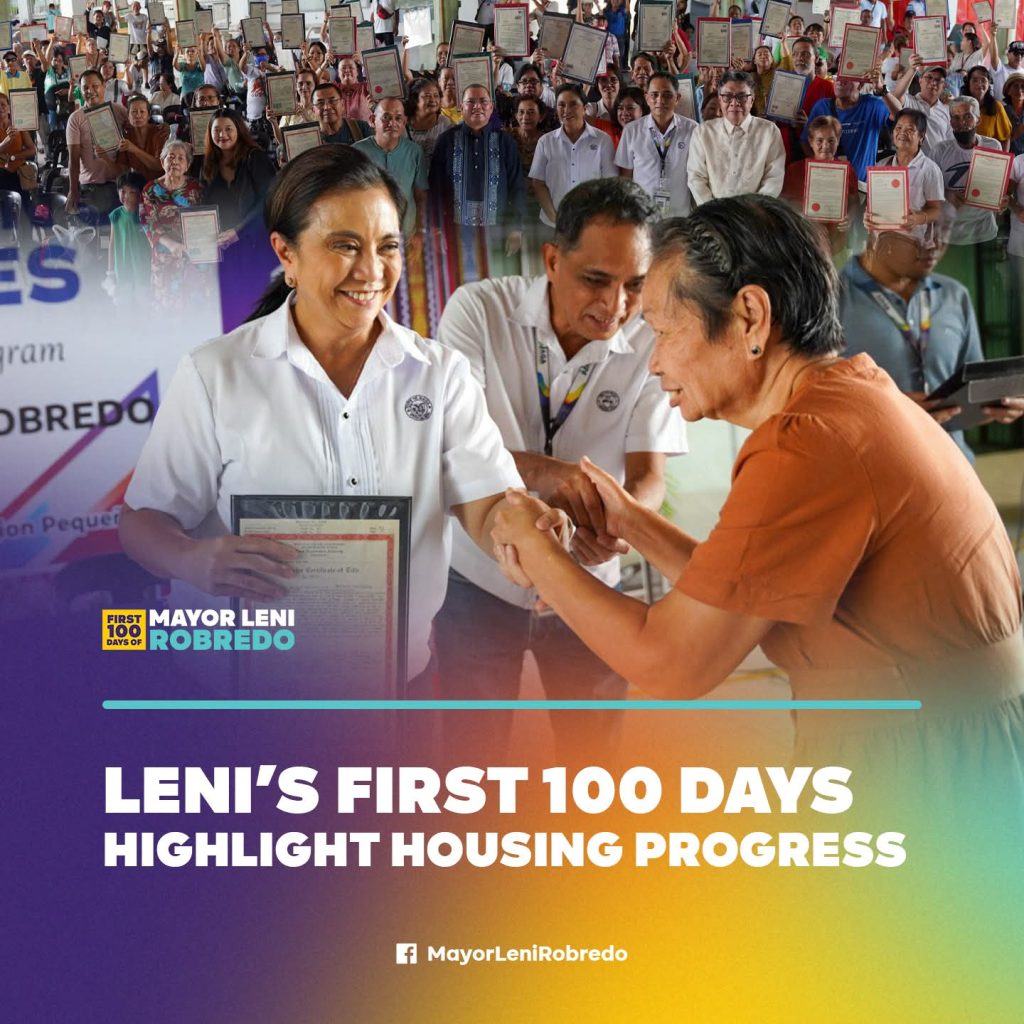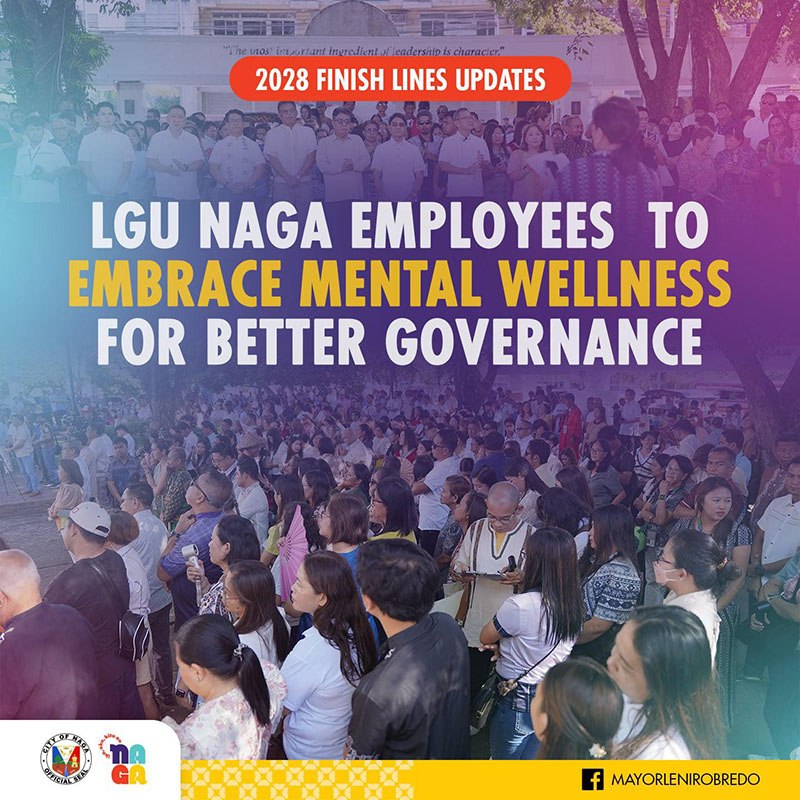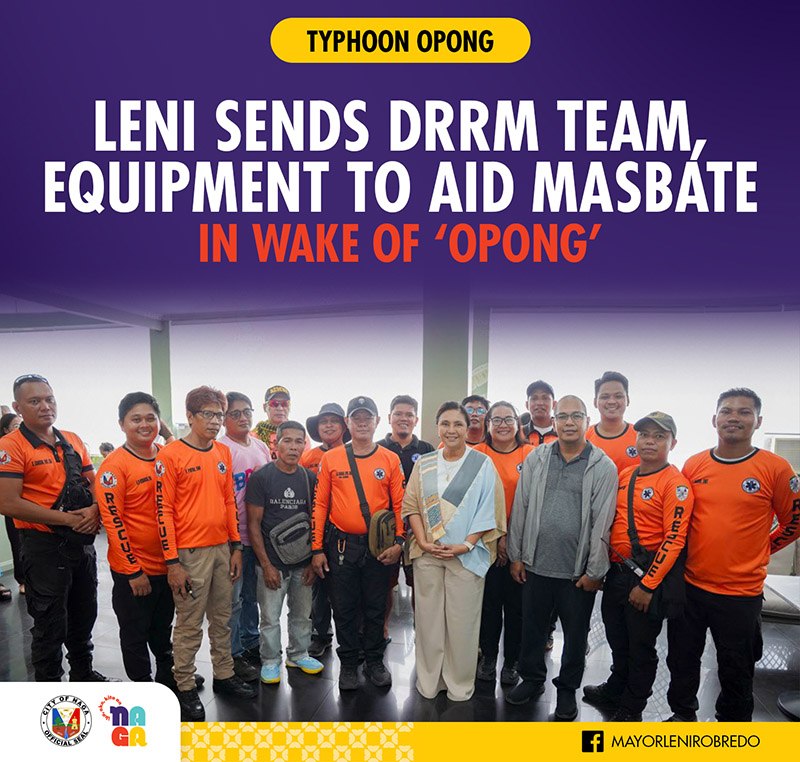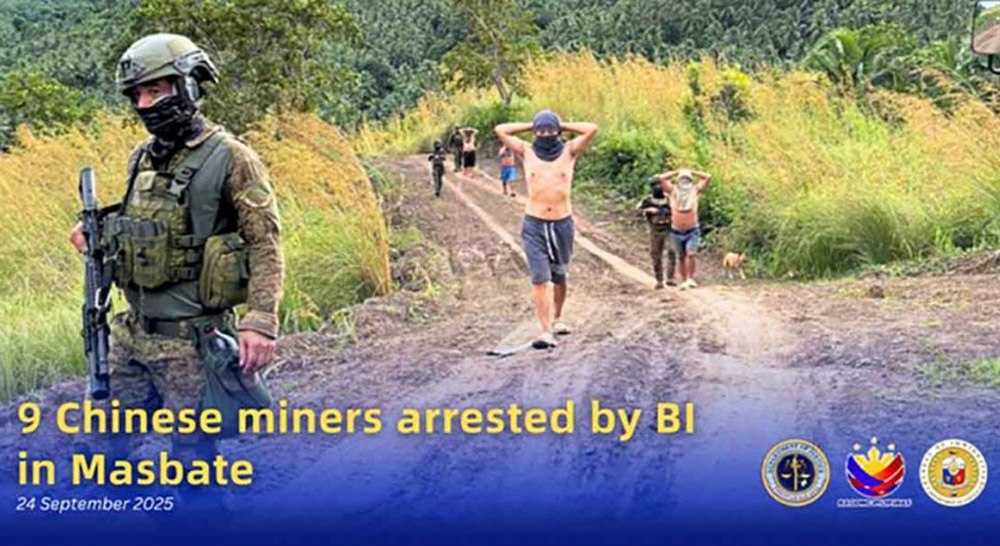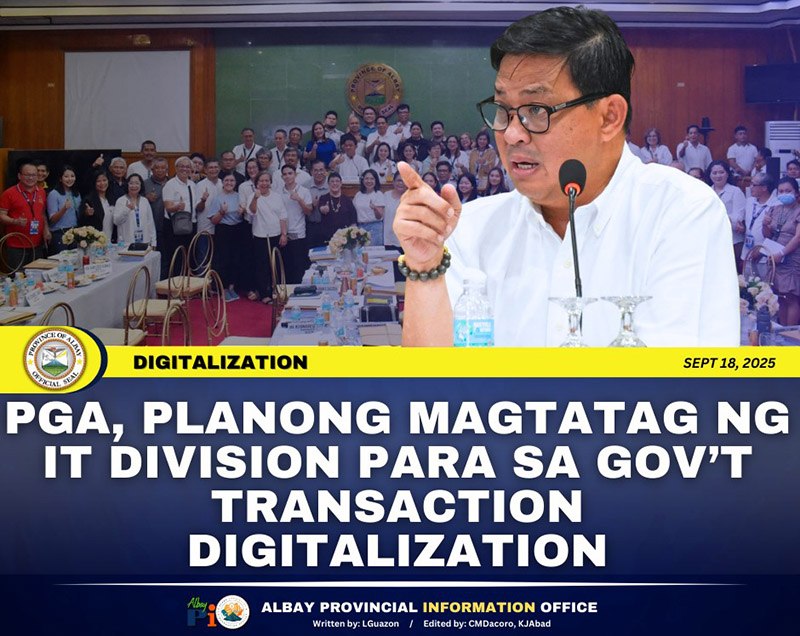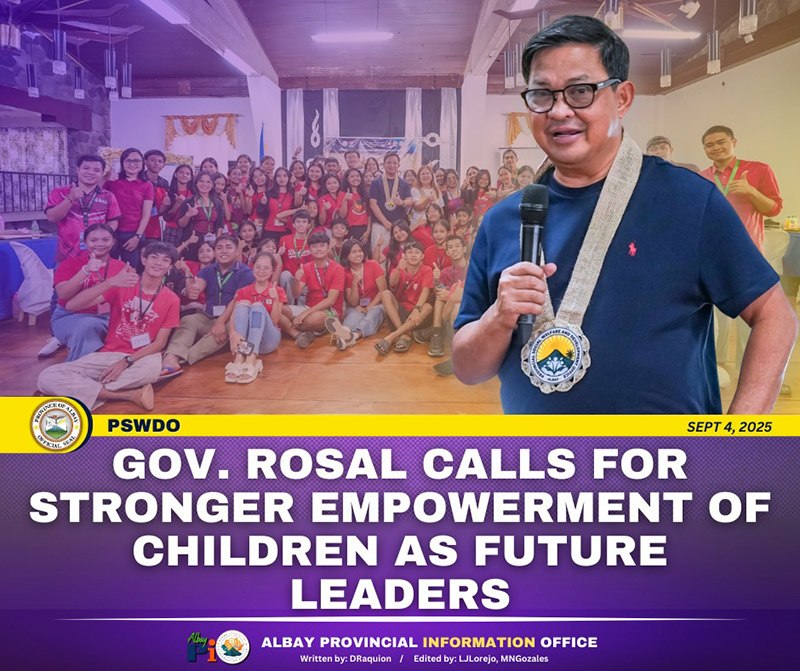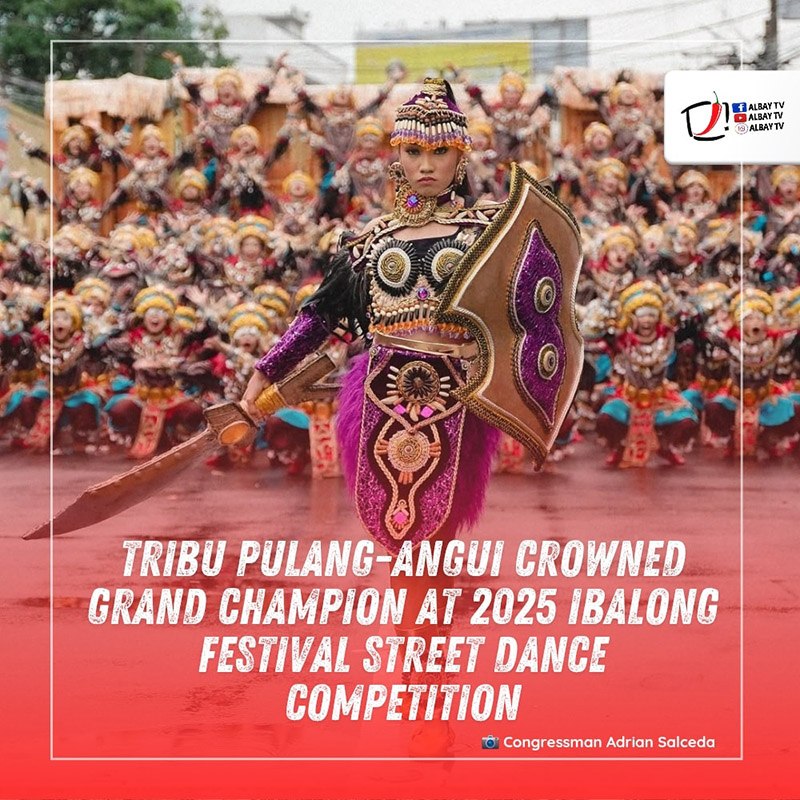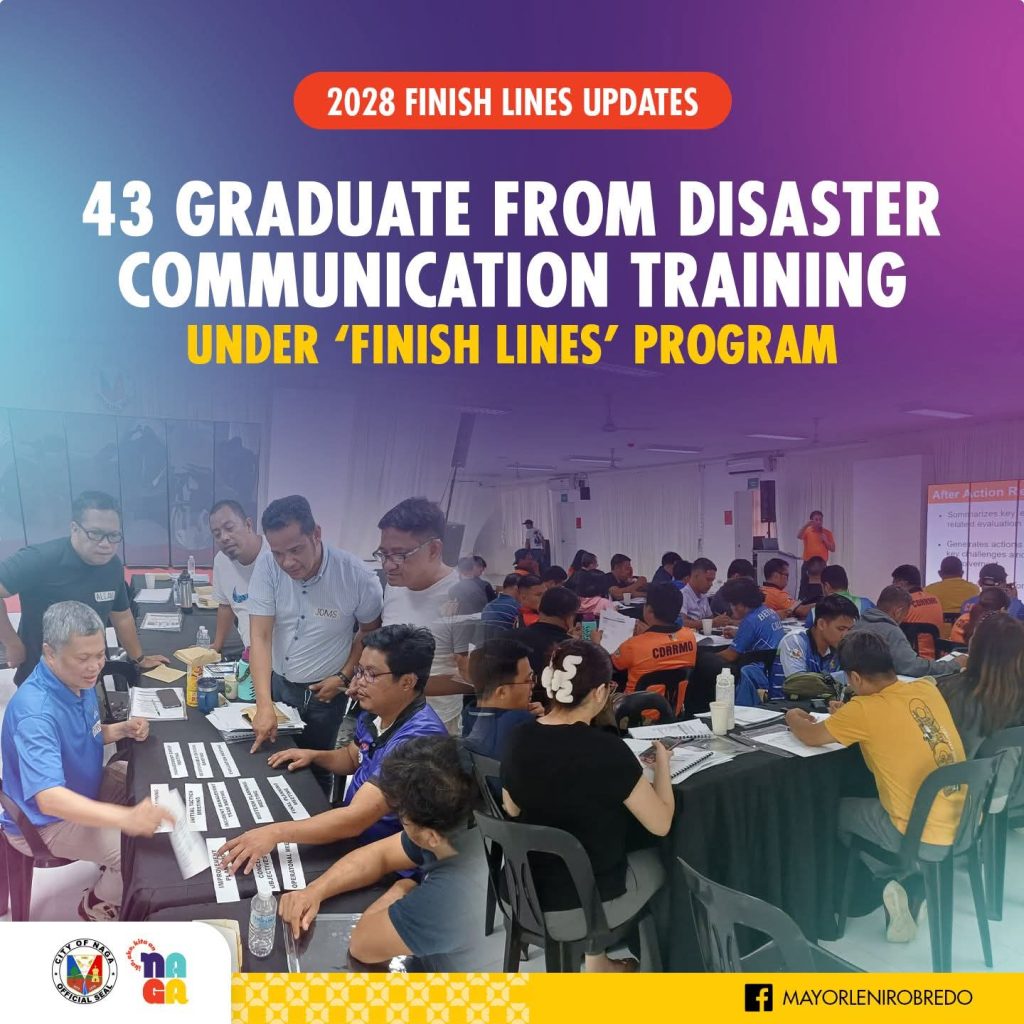By Jason B. Neola NAGA CITY, Philippines — A total of 43 employees and department heads of the Naga City government have successfully completed a specialized training on disaster communication management, as part of the city’s intensified disaster preparedness campaign and Mayor Leni Robredo’s broader vision under her 2028 “Finish Lines” agenda. The training, organized by the Office of Civil Defense (OCD) in Bicol Region and sponsored by the Philippine Disaster Resiliency Foundation (PDRF), was conducted upon the request of Mayor Robredo. It focused on equipping local government personnel with the skills to manage effective communication during disasters and large-scale events. Raynor Rodriguez, Officer-In-Charge of the city’s Disaster Risk Reduction and Management Office (DRRMO), emphasized the importance of the initiative, particularly in the context of the fast-approaching Peñafrancia Festival. “The training was very timely. During big events like the fiesta, multiple clusters are involved—such as the Philippine Coast Guard for the fluvial procession and the PNP for security. Clear communication is critical,” Rodriguez said. The training included intensive exercises and workshops that allowed participants to practice proper cascading of information during crises. It also helped participants better understand the elements of conducting emergency drills. One of the key takeaways was that simulation exercises—such as earthquake and fire drills—should be done independently, not combined, since each disaster has unique response mechanisms. “Thanks to the disaster communication training, the flow of information from the Incident Management Team down to the barangays, especially during big events like the Peñafrancia festival, is expected to be more seamless and further improved,” he said. Mayor Robredo stressed the importance of extending this training to the grassroots level. “We want our Punong Barangays and the barangay kagawads to also undergo this training so they can report incidents properly, and empower their sitios and zones to take appropriate action,” she said. Rodriguez echoed the Mayor’s sentiment, noting a major shift in mindset brought about by the training. “We’ve realized that communication shouldn’t just flow top-down from the Mayor’s Office. Everyone, especially at the barangay level, has a role to play. It’s not about monopolizing decision-making; it’s about collaboration,” he said. He added that the training is especially relevant now that Naga City has started operating its own rain and flood warning devices in barangays—tools that require community-level monitoring and response. “This setup empowers barangay officials and residents to act proactively, but it only works if communication is timely, accurate, and verified,” Rodriguez noted. He also warned against the spread of misinformation on social media during disasters. “Some people rush to post on Facebook without verifying information. Such posting only causes panic. This training helps address that situation by instilling discipline in communication and reporting,” he said. According to Rodriguez, this initiative is a key component of Mayor Robredo’s 2028 “Finish Lines” — a set of developmental goals for Naga that prioritize community empowerment, disaster resiliency, and inclusive governance. “The goal is clear: capacitate every Nagueño, from City Hall to the remotest sitio, to act correctly and confidently when disaster strikes,” he concluded.




